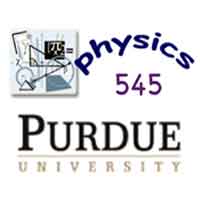Lecture 13: p-n Junctions
We talk more about holes today. They don't really exist, you know! But when only a few electrons are missing from the valence band, it's so much more convenient to describe only the missing states that the fictional particles we call "holes" are a very useful concept. We talk more about their mass, velocity, momentum, and other properties. Then we discuss the p-n junction, where a semiconductor surface is donor-doped on, say, the right, and acceptor-doped on, say, the left. We calculate the strength of the permanent electric field that happens at the interface. This permanent electric field produces a real live voltage in the material. Can you use it to run a light bulb?
Due to technical difficulties this year, I post last year's lecture:
Lecture Audio
Due to technical difficulties this year, I post last year's lecture:
Lecture Audio

